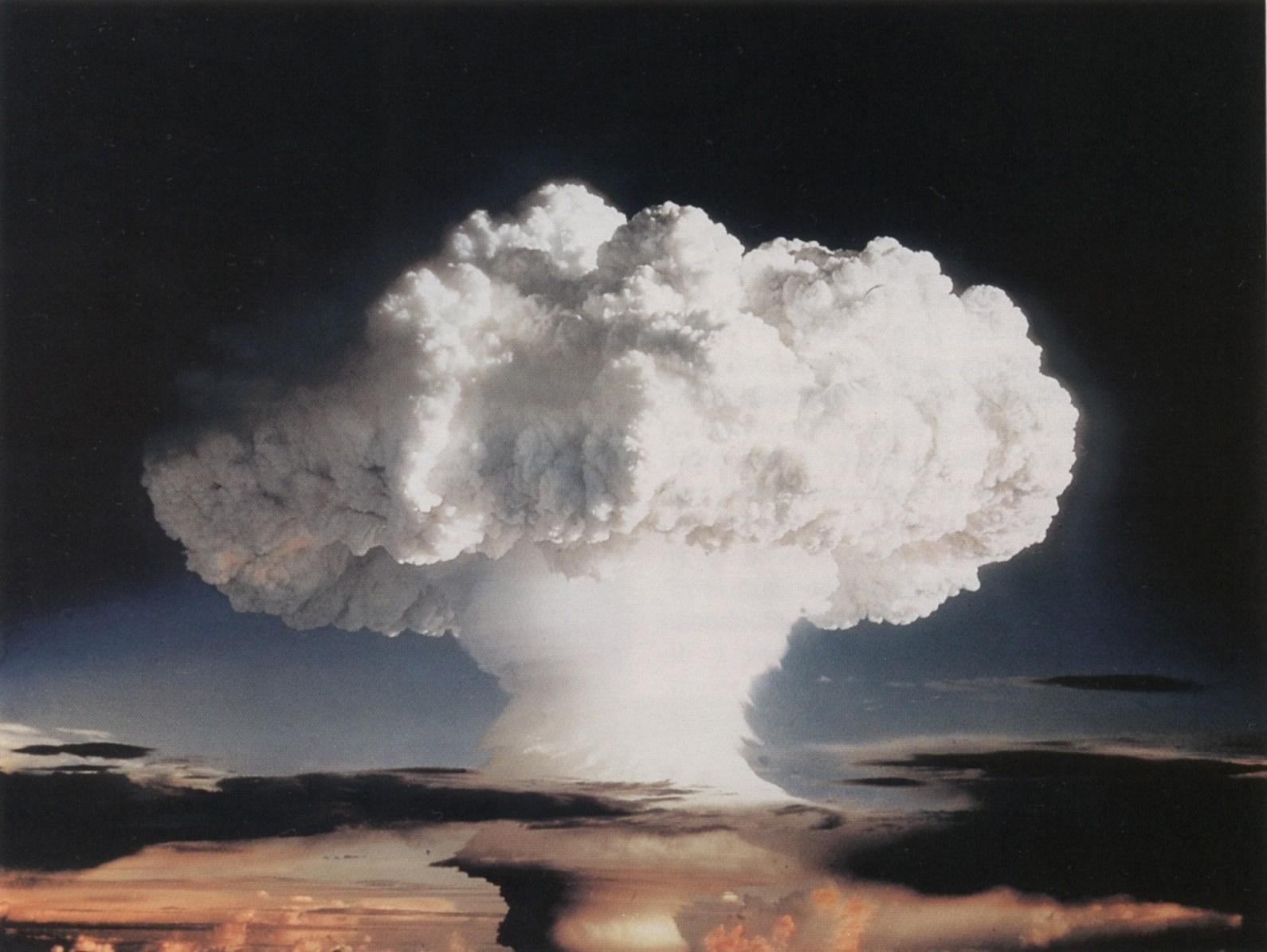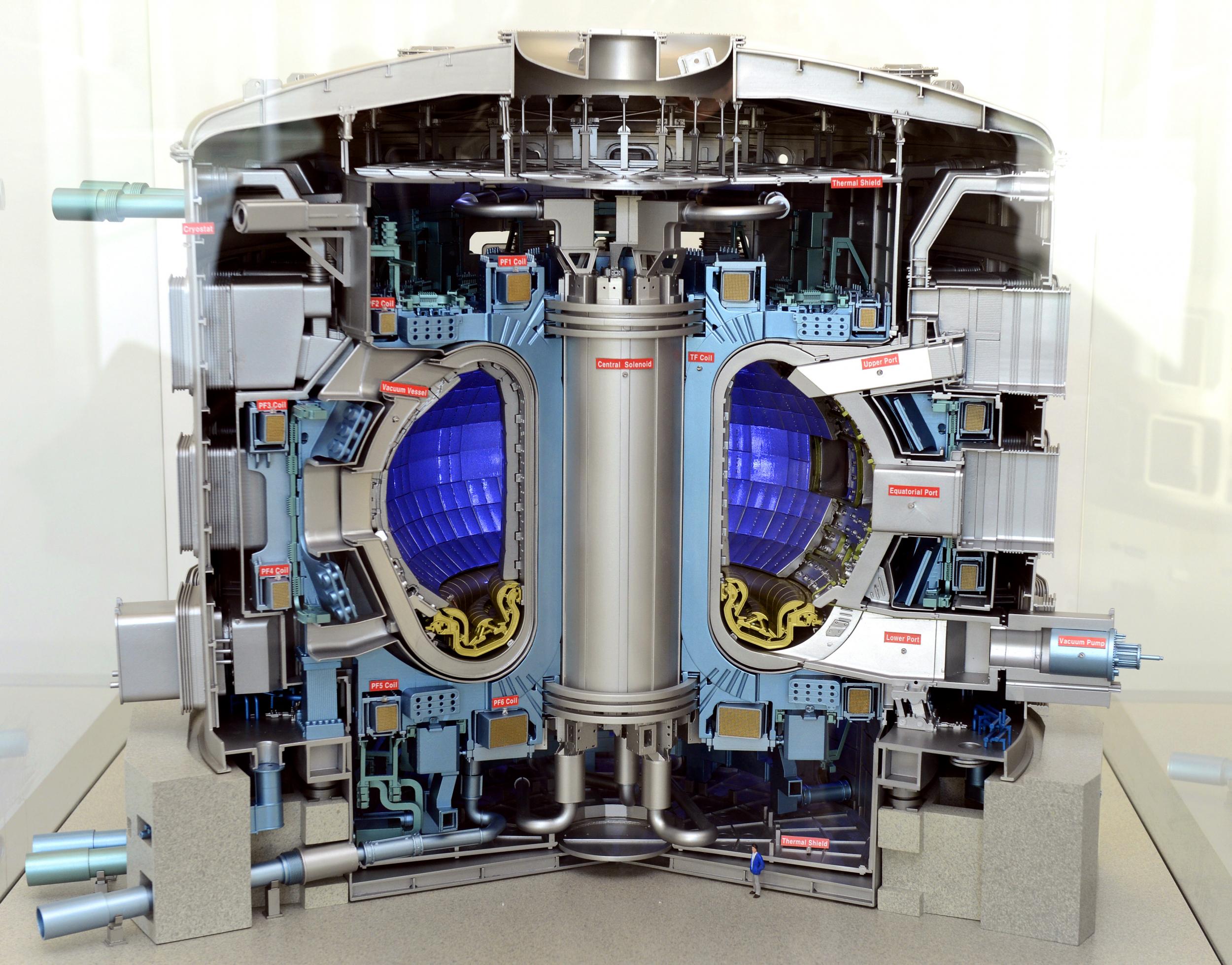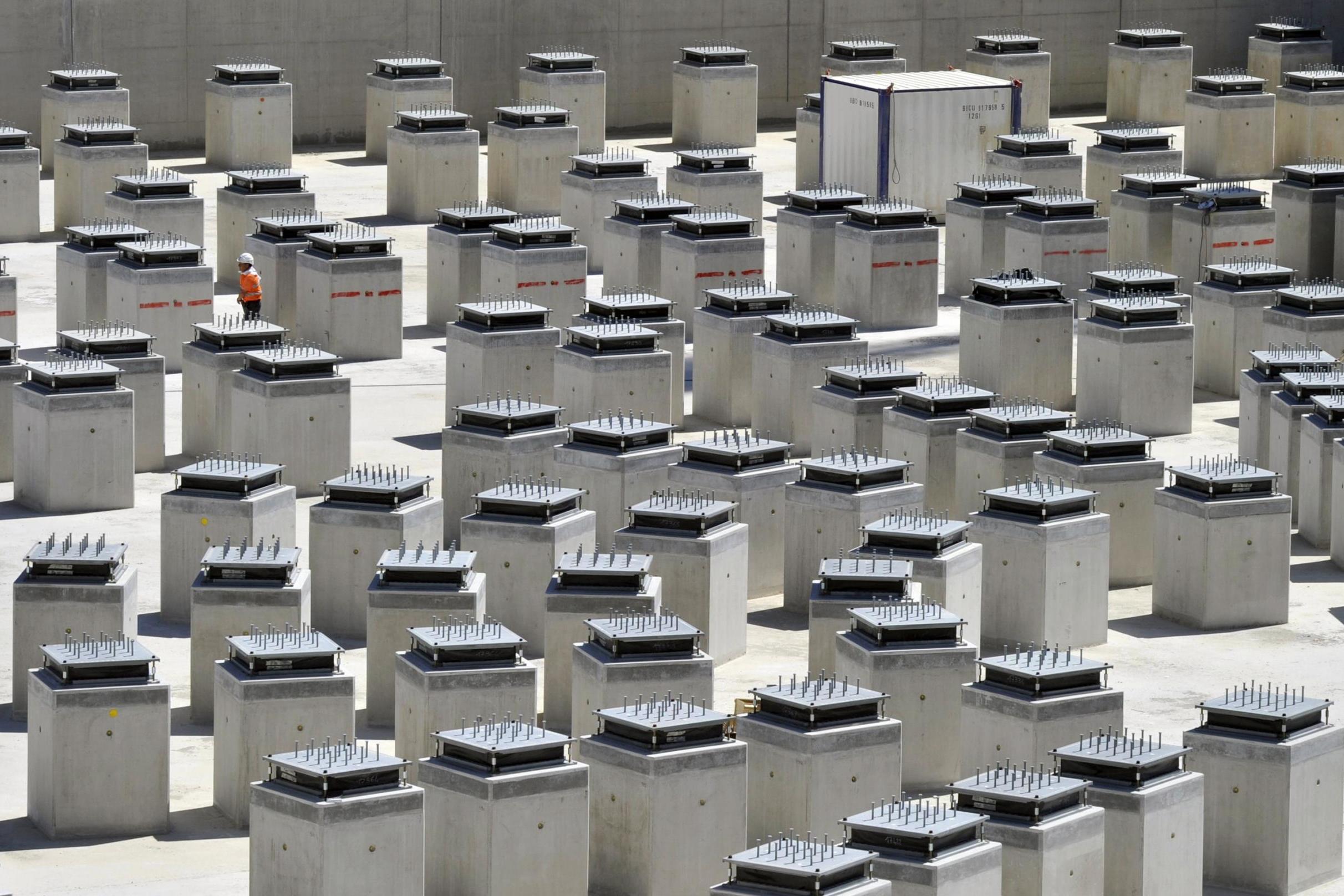Is the holy grail of energy finally within reach... and will it work?
Since the first demonstration in the 1930s, hundreds of reactors have been built all over the world. Not one has produced a single gigawatt of energy, nor will they for decades. But that’s not the point, writes Steven Cutts


It’s been around for so long that it’s almost gone out of fashion. Nuclear fusion has been and remains the holy grail of energy research and it’s about to take a giant leap forward. In Provence, the world’s largest and most exciting nuclear fusion research facility is finally taking shape. The cost overruns are almost as astonishing as the engineering itself. At the beginning of the century, it was suggested that Iter, the world’s largest fusion experiment, could be built for around €6bn. By the middle of this decade, when it is fully operational, total costs will be at least 10 times greater than that. Big science has a habit of overrunning its initial budget but Iter is in a league of its own.
As long ago as the 1930s, nuclear fusion was demonstrated in a lab at the University of Cambridge. A team led by Ernest Rutherford achieved the impossible using equipment that would seem tiny and primitive to the modern physicist. Since then, over 100 fusion reactors have been built around the world. Not one of them has produced a single kilowatt of electricity. Neither will Iter. The option to generate electricity has not been engineered into the Iter project. Its purpose is to do something that no previous fusion reactor has ever done: gain.
The whole point of a nuclear fusion reactor is that it should generate electricity. Thus far, just about all of them have consumed more energy than they produced. When a reactor gives a positive balance sheet on the energy front then it has achieved gain. If it succeeds, then we will have to build another groundbreaking reactor called Demo. Demo ought to be able to produce about 2 gigawatts of electricity. To put this figure into perspective remember that the existing fission nuclear reactor at the Sizewell B station on the Suffolk coast produces 1.8 gigawatts. If Demo succeeds then that in turn might lead to the production of fusion reactors on a large scale and an end to the energy crisis, global warming and the various proxy wars that men have fought to secure their fossil fuel resources. Iter is effectively a stepping stone on the way to a commercially credible power source. In practice, we’ll be lucky to see a viable fusion reactor anywhere in the world in the next 30 years.
This kind of thing has prompted many observers to conclude that we’re just never going to get there. Not only does fusion research consume a huge proportion of our overall R&D budget, but it never delivers a return. It is a mirage that recedes as fast as we approach it.
Needless to say, this isn’t an entirely rational position. For thousands of years, people could see birds in the sky and dreamt that man might be able to emulate their skill. All kinds of idiots attached improvised wings to their arms and quite a few people actually killed themselves trying to launch themselves from a cliff. Then, one bright sunny day in Kitty Hawk, the Wright brothers actually managed it. And then we could fly. If you stop to think about it, we could say much the same thing about virtually any scientific or technological achievement at any stage in our history.
In time, we will say the same of fusion.

This problem has been compounded by a relentless process of false optimism. While scientists and engineers usually cite 20 years as the delay between where we are now and the date of the first fully functional nuclear reactor, this 20 to 30 year time span has remained unchanged since the 1950s. In an era of real scientific optimism (the 1960s) fusion seemed more likely than in an era of self-doubt (for example, the 1970s).
There are, however, genuine problems for the fusion industry. The airline industry is heavily reliant on business travellers but ongoing advances in virtual reality may lead to many face-to-face business meetings being abandoned. People communicating from the office or even – as we have seen lately – their spare bedroom.
The price of photovoltaic solar panels is plummeting and it’s not obvious when this process will end but if it doesn’t, many fusion scientists may be looking for another job. It has been predicted that by 2050, about a third of global electricity will be derived from the sun. While this may prove to be overly optimistic, it’s at least as likely that the true figure will be much higher than this than lower. Onshore wind has experienced a dramatic reduction in cost and a fusion power plant would, presumably, find itself competing with with all of these technologies. As a kid, I read about global warming long before it became a mainstream political issue. I can remember thinking that there was a reasonable chance that global warming would become a reality but that governments would simply ignore it until things were much too late. I was wrong. Dramatic action is now underway.

In contrast to nuclear fission, a fusion reactor is expected to produce minimal radioactive waste. The fuel for a fusion reactor could be extracted from seawater. Access to materials such as uranium and plutonium has been one of the issues constraining the use of fission nuclear power. Fission nuclear power stations have a habit of overrunning during the construction phase and have a predicted budget that simply bears no resemblance to the final cost. Popular anxiety about fission nuclear power has also been a major issue holding back the expansion – or even the survival – of the fission industry. At the moment, smaller states that simply do not have the capacity to build their own fission nuclear reactors are buying them from third-party countries such as Russia or South Korea.
There is something truly seductive about the quest for nuclear fusion power, an excitement that ongoing research into wind turbine technology just doesn’t provide
The single most popular design for a nuclear fusion reactor is a Tokamak. This concept was first proposed in 1950 by Soviet scientists Andrei Sakharov and Igor Tamm. Most but not all attempts to develop fusion involve the construction of a large doughnut-shaped reactor chamber that is filled with gas; most of that gas is hydrogen. The hydrogen is heated to fantastically high temperatures and constrained by huge electromagnets that are external to the reactor.
Other concepts are been tried too. For example, it is possible to shoot lasers at a pellet of hydrogen-like material and heat it up to such a high temperature that fusion then occurs. While research in this field goes on, the Iter project is based on the more traditional Tokamak.
In 1989, in one of the more bizarre subplots to the entire nuclear fusion story, two electrochemists in the United States claimed to have demonstrated nuclear fusion at room temperatures, the so-called cold fusion phenomenon. Somewhat idiotically, Stanley Pons and Martin Fleischmann then decided to hold a press conference before their work had been subject to peer review. A fantastic amount of public attention came their way but no other group was able to replicate their work and the concept was eventually abandoned.

The only way to achieve fusion seems to involve very high temperatures and exotic conditions. In order to understand the nature of nuclear fusion, we need to understand the fundamental physics of the universe.
Within that universe, one substance is more stable than all others: iron. The subatomic particles in the centre of an iron atom have the highest binding energy of any atom with the result that pretty much every other kind of atom in the universe has a deep-seated desire to become iron. If a smaller atom than iron wants to reach an idealised state it needs to increase its size by fusing with other smaller atoms. For atoms larger than iron, the reverse is true. A very large nucleus like uranium for example would have to fragment into smaller nuclei in order to scale itself down towards the glorious, ideal energetic state: iron.
Basically, glueing small atoms together to make bigger ones will release energy. A powerful example of this would be the hydrogen bomb. Not all the hydrogen atoms in this world want to spontaneously fuse together; the activation energies are out of this world and the only really reliable place to do it is in the centre of a star.

The centre of our own sun, for example, operates at temperatures of about 15 million degrees centigrade. Pressures vary between 3.4 x 108 and 2.25x 1011 times greater than the pressure of air you are breathing now. If you’re finding it difficult to imagine temperatures and pressures on this scale, don’t let it worry you. Nobody really can. Nuclear fusion is so difficult to achieve; it requires heating hydrogen gas up to temperatures of this kind in order for the nuclei to collide and glue together. To put this process in perspective, nuclear fusion only occurs in the centre of the sun; even the outer atmosphere of the sun isn’t hot enough.
The history of fusion research is simply littered with one false dawn after another. One group after another claimed to have achieved nuclear fusion only to have their achievement snatched away from them when new data came in that seemed to undermine their initial findings. To date, the largest Tokamak ever built is the Joint European Torus (JET) which was constructed on time and on budget in Culham in England in the early 1980s. As with the forthcoming Iter, there has never been any suggestion that JET would produce electricity, but it has proven to be a major step forward for fusion research. The project has also kept Britain as the forefront of a major scientific field.
This position will now pass to France.

As with JET, it was quickly accepted that the next fusion research facility would be a joint effort between many nations and an argument soon broke out as to where the project would be sited. The United States, Russia, China, Japan, Australia, India, South Korea and the European Union have all contributed money and hardware to the project. Thanks to the miracle of the internet, many of their researchers will be able to monitor and participate in the experiments from their home countries.
Iter will see temperatures soar to 150 to 300 million degrees C, although internal pressures will be much less than those seen in the centre of a star (the pressure of the gas in the centre of the sun is 150 times greater than solid gold – impossible to simulate here on Earth). If we put some hydrogen in a box and slowly heat it up, we will soon run into a problem. Long before the temperature reaches the point at which fusion occurs, the box will melt. There is simply no material known on Earth that could remain solid at the temperatures required to achieve nuclear fusion.
However, scientists have thought of a way to overcome this problem. At very high temperatures, the atoms have been stripped of their orbiting electrons. As in the centre of a star, raw atomic nuclei bounce around in a sea of free electrons. This sort of gas is described as plasma and some scientists believe that it should be regarded as a fourth state of matter, completely distinct from solid liquid or gas. Since moving electrically charged particles bears a suspicious resemblance to electricity, any kind of convection current within the plasma will produce a magnetic field of its own. At the same time, an electrically charged gas can be manipulated from afar using magnets. Quite early on in the development of nuclear fusion, it became apparent that hot plasma could be contained within a box and effectively surrounded by a zone of pure vacuum. Since the unimaginably hot plasma never touches the wall, the wall cannot melt. Magnets on this scale need to be far more powerful than the sort of toy, bar magnets you probably played around with at school. They require massive coils of electrical wire to be wrapped around the doughnut-shaped reactor. For the Iter project, they will be augmented by yet another exotic technology: cryogenic superconductors.
Needless to say, this kind of research has become eye wateringly expensive. On top of that, everybody involved in the field is fully aware that it is likely to take 20 to 30 years before anything remotely useful comes out of it. None of the politicians involved in the decision-making process will still be in power when the first commercially credible reactor switches on. Quite a few of them will be dead and there are very few votes in nuclear fusion research. It does, however, offer the long-term prospects of immense electrical power that creates very little in the way of radioactive waste. The implications of being able to access power that might effectively become free are difficult to comprehend. Overnight, limitless fresh water may be available to anybody who needs it (there’s no shortage of seawater and it’s easy to desalinate seawater if you’ve got enough electricity). Vast areas of desert might suddenly bloom. Will those countries who funded the Iter project sell their technology to those who didn’t contribute to the project? Or will the science of nuclear fusion ultimately become open source and available to everyone?
As you might expect, Iter has its detractors and its rivals. An Italian American group are in the process of planning a new mini-reactor called Sparc. Two British start-up companies are hoping to beat Iter to it with mini-reactors of their own. There have been so many false dawns in the history of fusion research that its hard to know just how credible any of these projects are.
But there are other issues at stake here including that of prestige. The host nation in this kind of project has to put forward a disproportionate amount of the capital and there was a protracted struggle between Japan and France as to who should win control of the Iter site. The eventual victory by France is a major boost to that country and seems to send a broader message to the entire world: France is a leading nation, a force to be reckoned with on the global stage. Still half-finished, Iter is an extraordinary construction project with its grandiose cathedral-like building having already captured the imagination of the next generation of scientists. Soon Iter will be up there with the International Space Station and the Hubble Space Telescope. This force that drives the stars. There is something truly seductive about the quest for nuclear fusion power, an excitement that ongoing research into wind turbine technology just doesn’t provide. It’s a feeling that only the people who work in nuclear science have really experienced and it isn’t going to go away fast.
Join our commenting forum
Join thought-provoking conversations, follow other Independent readers and see their replies
Comments
Bookmark popover
Removed from bookmarks